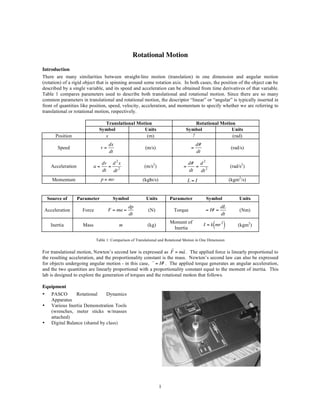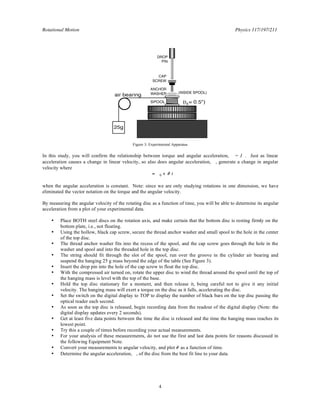1) Rotational motion and translational motion share many similarities, with position, speed, velocity, acceleration, and momentum all having analogous parameters between the two types of motion.
2) Torque is the rotational equivalent of force - torque generates angular acceleration as force generates linear acceleration. The moment of inertia of an object resists changes in angular motion, similar to how mass resists changes in linear motion.
3) For a given total mass, an object will be easier to rotate if its mass is located closer to the axis of rotation, as this lowers its moment of inertia compared to a mass distributed farther from the axis.







